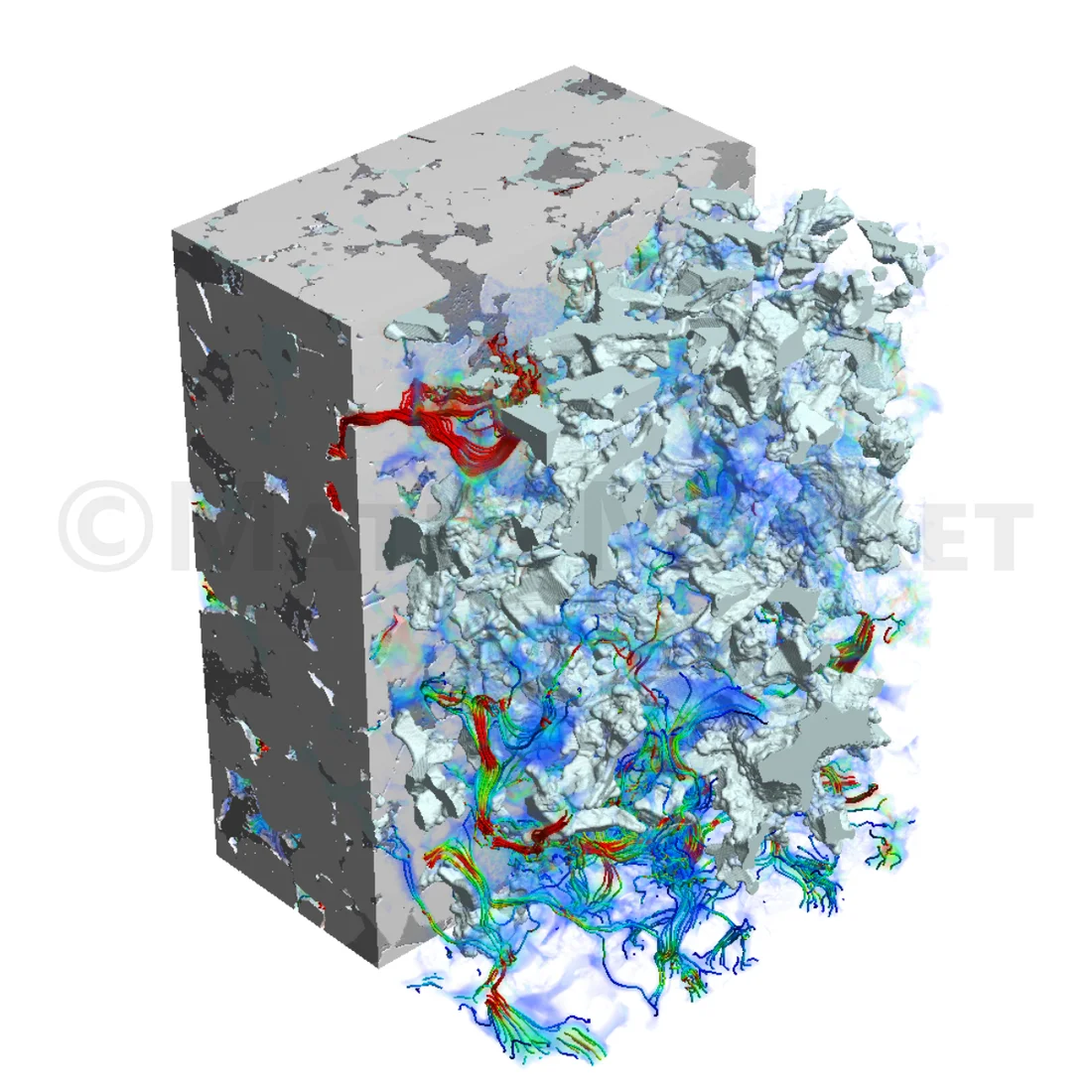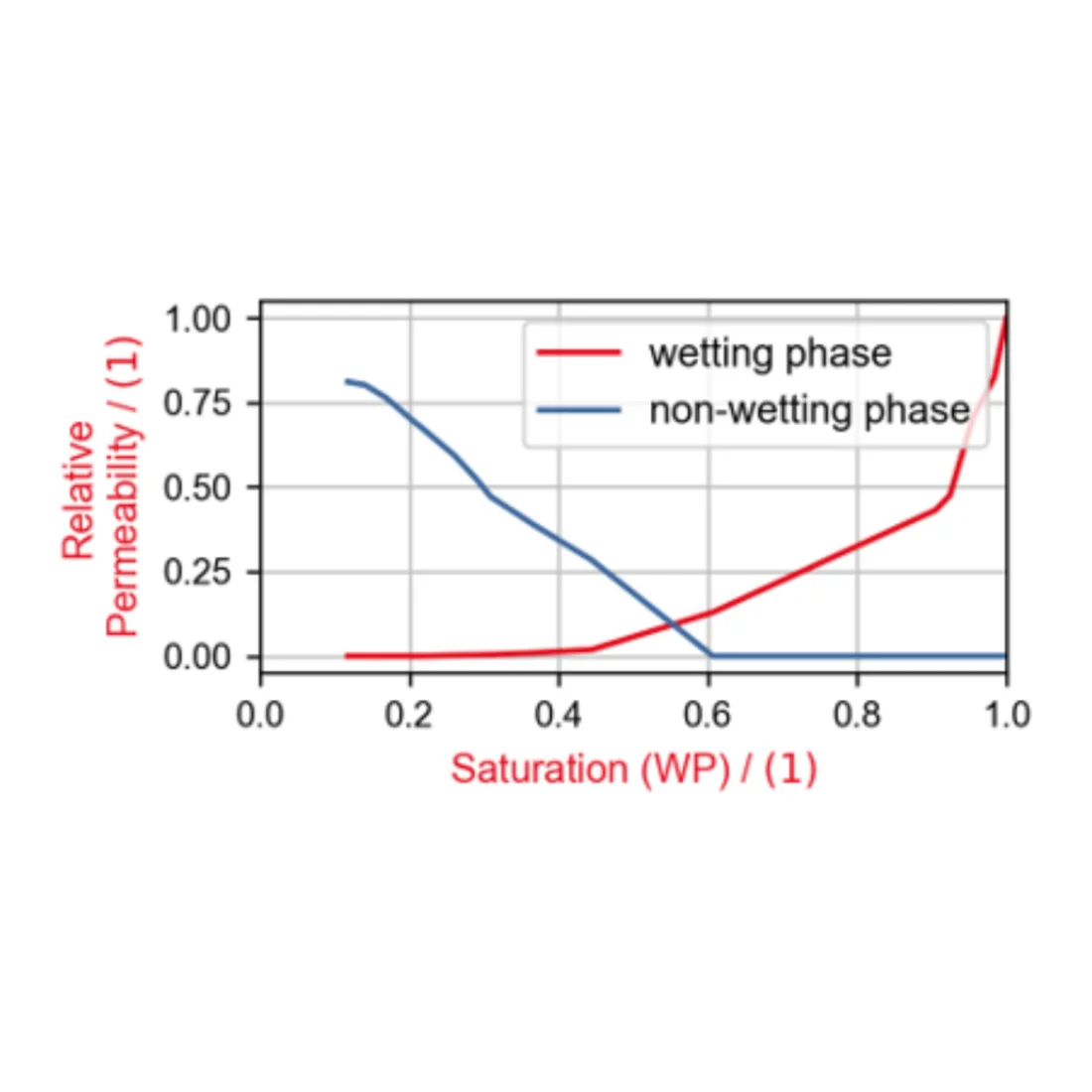CO2-sequestration techniques and storage mechanisms
Digital analysis of rocks for diverse CO2 storage methods
Storing CO2 in depleted oil and gas reservoirs helps to decrease CO2 emissions into the atmosphere and thus, positively contribute to reduce climate change. With the infrastructure already in place, the depleted energy storage facilities can be quickly and effectively converted for storage. These depleted reservoirs turn then into important assets requiring proactive management throughout the life of the reservoir. Detailed knowledge of the reservoir is important to quantify its potential for CO2-sequestration.
While the depth of the reservoir is a known quantity, the rock must be analyzed to determine the possible CO2-storage capacities. With the digital rock physics capabilities in GeoDict, rocks are tested quickly and efficiently for these characteristic values:
- Capillary Pressure Curve with the SatuDict module
- Relative permeability with the SatuDict module and FlowDict modules
- Resistivity Index with the SatuDict and ConductoDict modules
- Reactive Flow with the AddiDict, FlowDict and MatDict modules
The potential of depleted oil and gas reservoirs can be determined with these digital analyses regarding to the following CO2-sequestration technologies:
- Structural trapping: Trapped phase below an impermeable, confining layer.
- Capillary trapping: Residual phase trapped in the pore spaces.
- Mineral trapping: Reactive phase, which forms carbonate minerals.
With the digital workflow in GeoDict, these properties of the reservoir rock are quickly and efficiently determined.
The advantages of using GeoDict are:
- Time saving: digital experiments in GeoDict require only a fraction of the time compared to laboratory experiments.
- Reliability: Trust GeoDict to analyse high-resolution core samples and rocks. Our solvers are shown to work on billions of data points quickly, accurately, and reliably.
- Integration: Thanks to many years of experience working closely with our customers, GeoDict offers the right interfaces to integrate it seamlessly into existing, in-house workflows.
Direct numerical simulation of two-phase flow
Simulate directly in the voxel geometry
Displacement efficiency (CO2 replaces water)
Pore-Morphology approach with Dynamic Fluid Interface features
Compute drainage, imbibition, and hysteresis
Apply your individual setting or determine Gas Trapping curves
Wettability consideration
Water-wet, CO2-wet, and mixed-wet systems
Compute dissolution and precipitation of mineral phases during continuous inflow of reactants (e.g., acid) and predict:
- Permeability reduction & enhancement of porosity-permeability relationship
- 4D rock alteration → Dissolution regime
- Chemical transport
Reactive Flow applications in DRP:
- CO2 sequestration (dissolution, precipitation)
- Acidizing treatments in carbonate reservoirs
- Further applications:
- Nuclear Waste Storage, Environmental remediation, and more







